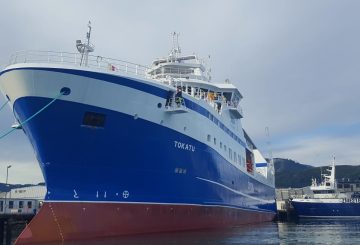Ủy ban Biến đổi Khí hậu đã tuyên bố rằng New Zealand cần ngừng nhập khẩu ô tô chạy xăng vào năm 2040 để đáp ứng mục tiêu mới là giảm phát thải khí nhà kính xuống dưới 27 triệu tấn mỗi năm. Ủy ban tin rằng New Zealand nên tăng mục tiêu khí hậu năm 2050, vì những nỗ lực hiện tại của đất nước không đáp ứng các tiêu chuẩn quốc tế.
Ủy ban cũng đề nghị New Zealand nên bao gồm lượng khí thải nhà kính từ máy bay và tàu đi đến và đi từ nước này trong các mục tiêu khí hậu của mình. Những khí thải này chiếm 9% tổng lượng khí thải của cả nước trong năm 2019, nhưng hiện không được tính do một kẽ hở chung.
Ủy ban đã đề xuất giới hạn khí thải mới cho năm 2036-2040, yêu cầu gần như tất cả ô tô nhập khẩu mới phải chạy bằng điện vào năm 2035 và 13% chuyến bay trong khu vực phải chạy bằng điện vào năm 2040. Ủy ban cũng dự đoán rằng sản lượng sữa sẽ vẫn ở mức hiện tại, nhưng với ít bò hơn và chuyển từ chăn nuôi bò sữa sang làm vườn.
Ủy ban tin rằng việc đáp ứng ngân sách đề xuất của mình sẽ tạo ra nhiều lợi ích kinh tế hơn là không hành động, chỉ riêng chất lượng không khí được cải thiện đã tiết kiệm được 2,7 tỷ đô la mỗi năm. Mục tiêu hiện tại vào năm 2050 là phát thải carbon dioxide và nitơ oxit ròng bằng không, và giảm 24-47% lượng khí thải mêtan so với mức năm 2017.
Ủy ban đang tìm kiếm phản hồi của công chúng về các đề xuất này trước khi đưa ra khuyến nghị cuối cùng cho chính phủ. Ủy ban cũng muốn thắt chặt ngân sách phát thải của đất nước trong thập kỷ tới để đảm bảo rằng những tiến bộ thực sự được đạt được trong việc giảm phát thải.
Dự thảo phân tích của ủy ban cho thấy, không bao gồm khí mêtan từ động vật trang trại, New Zealand có thể trung hòa carbon vào khoảng năm 2040. Nền kinh tế dự kiến sẽ tiếp tục tăng trưởng trong suốt quá trình chuyển đổi sang giảm lượng khí thải carbon. Các đề xuất của ủy ban sẽ được công khai cho đến ngày 31 tháng 5 và sẽ đưa ra các khuyến nghị cuối cùng của mình cho chính phủ vào cuối năm nay.




























































